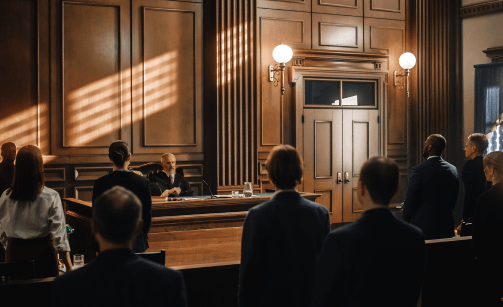Qualifying for reverse mortgage to get tougher
During the past several years of the economic recession, many desperate homeowners turned to what is known as a “reverse mortgage” to draw emergency cash out of their homes. Now, in an effort to reshape the reverse mortgage program back to its original purpose, the federal government has announced new restrictions.
At Stewart, Melvin & Frost, Scotty Ball specializes in residential and commercial real estate law, giving him a unique insight and perspective on what has taken place on the front lines of the real estate market.
Question: What is a reverse mortgage?
Scotty: Reverse mortgages allow a homeowner who is 62 or older to borrow money against the value of their home.
It’s different from a home-equity loan, because the borrower is not required make monthly payments on the debt.
Reverse mortgages are typically viewed as “a loan of last resort” because you are reversing the equity that you’ve saved up in your home. This may be appropriate for a retiree whose fixed income is no longer sufficient to pay the bills but does not want to move out of their home.
When the borrower either sells his home or dies, the bank takes its share of the reverse-loan money that was tapped out of the home. The borrower – or his heirs – receive what is left over.
Question: What happened with reverse mortgages during the economic downturn of the last several years?
Scotty: Unfortunately, reverse mortgages became a whole lot more popular during the recession.
Several distressed homeowners used reverse mortgages in ways that went well beyond their original purpose – which hurt the borrowers as well as the Federal Housing Administration that insures the program.
The original intent of a reverse mortgage was to be a long-term financial strategy for older adults. But out of desperation, many homeowners pulled out so much cash all at once that they didn’t have enough money left over to pay their property taxes and homeowners insurance.
Additionally, the FHA’s reserve funds took a huge hit. Lenders also were impacted because many of them were unable to recoup the cash value from their reverse mortgage loans when housing prices collapsed during the real estate crisis. They simply couldn’t sell the homes for a reasonable return.
Question: What has the federal government done since then to correct this misuse of reverse mortgages?
Scotty: Last year, the FHA stopped allowing homeowners to receive the maximum amount of money from a reverse mortgage loan all in one lump sum. The FHA also raised its fees and reduced the percentage of home value that can be drawn in a reverse mortgage.
Question: And now, is the government going even farther with a new set of restrictions?
Yes. Under new rules that go into effect on September 30, borrowers will be restricted to about 15 percent less money under a reverse mortgage due to even tougher qualifying.
Also, the pricing of reverse mortgages is being restructured to encourage borrowers to withdraw their money much more slowly. If you try to cash out more than 60 percent of the loan in the first year, for example, you will pay a higher upfront fee.
In addition, lenders will be required to validate a homeowner’s ability to afford property taxes and insurance before approving a reverse mortgage. That includes checking their credit history and all sources of income. Surprisingly, this was not a requirement in the old days when no underwriting was required by the lenders.
Just as we have witnessed a tightening of lending rules under the Dodd Frank Act, the government is taking similar action with reverse mortgages to modify much more responsible financial behavior among consumers.
The bottom line is that regulators want people to stop using reverse mortgages as a last resort – and instead as a measured financial tool for a long-term retirement strategy.


